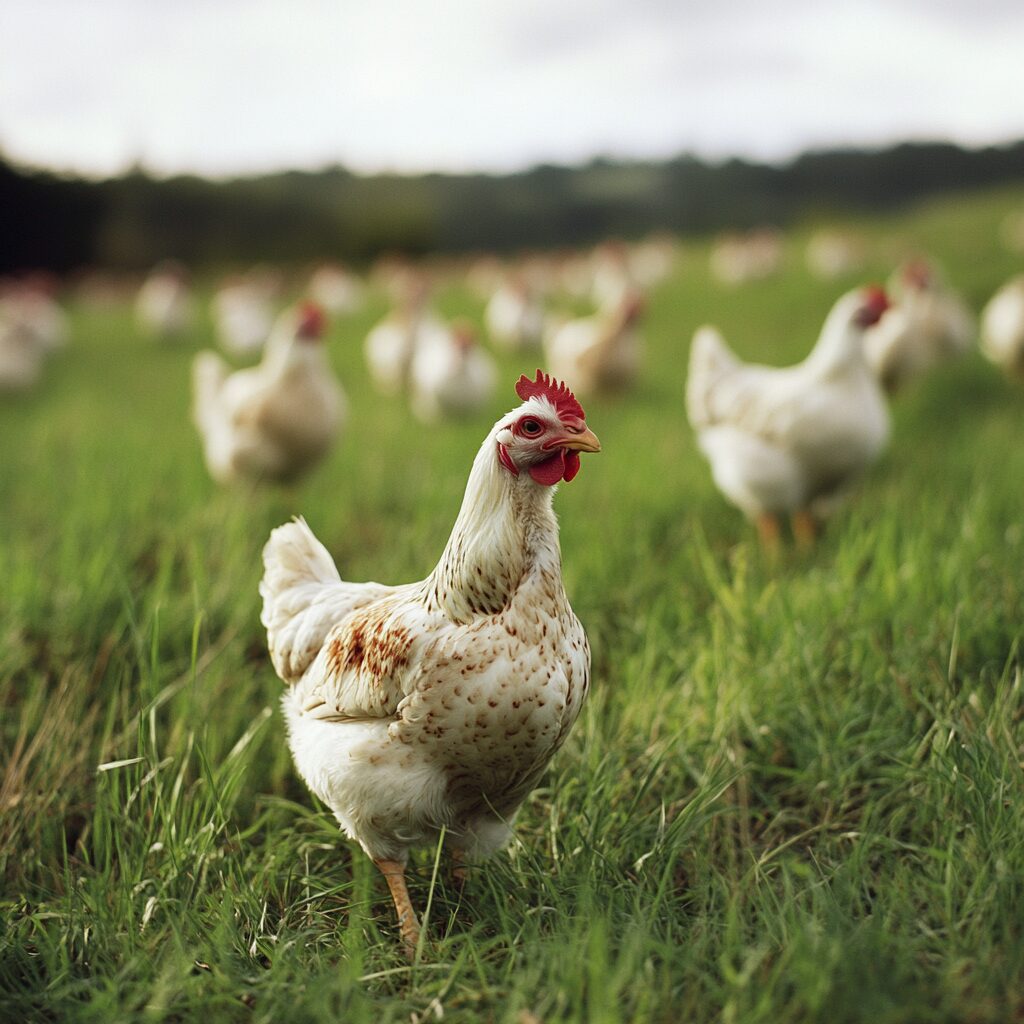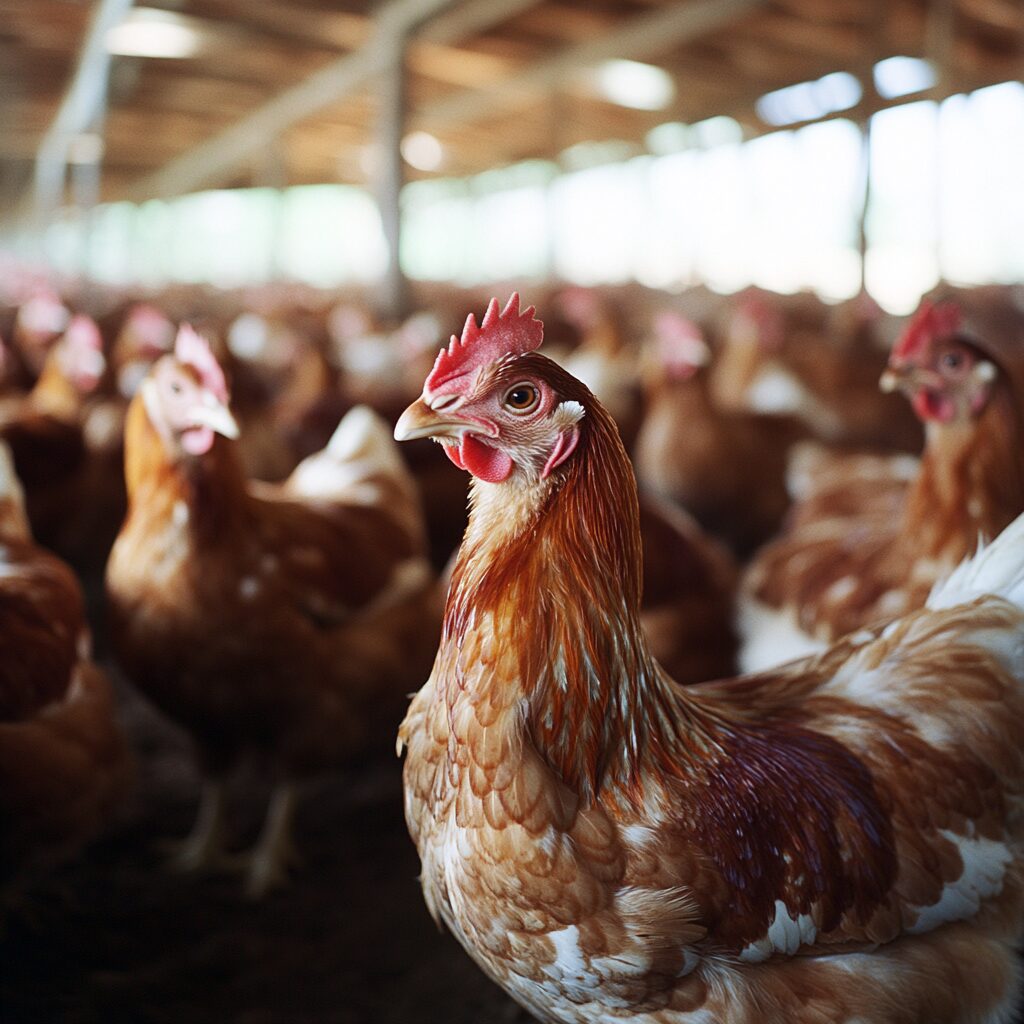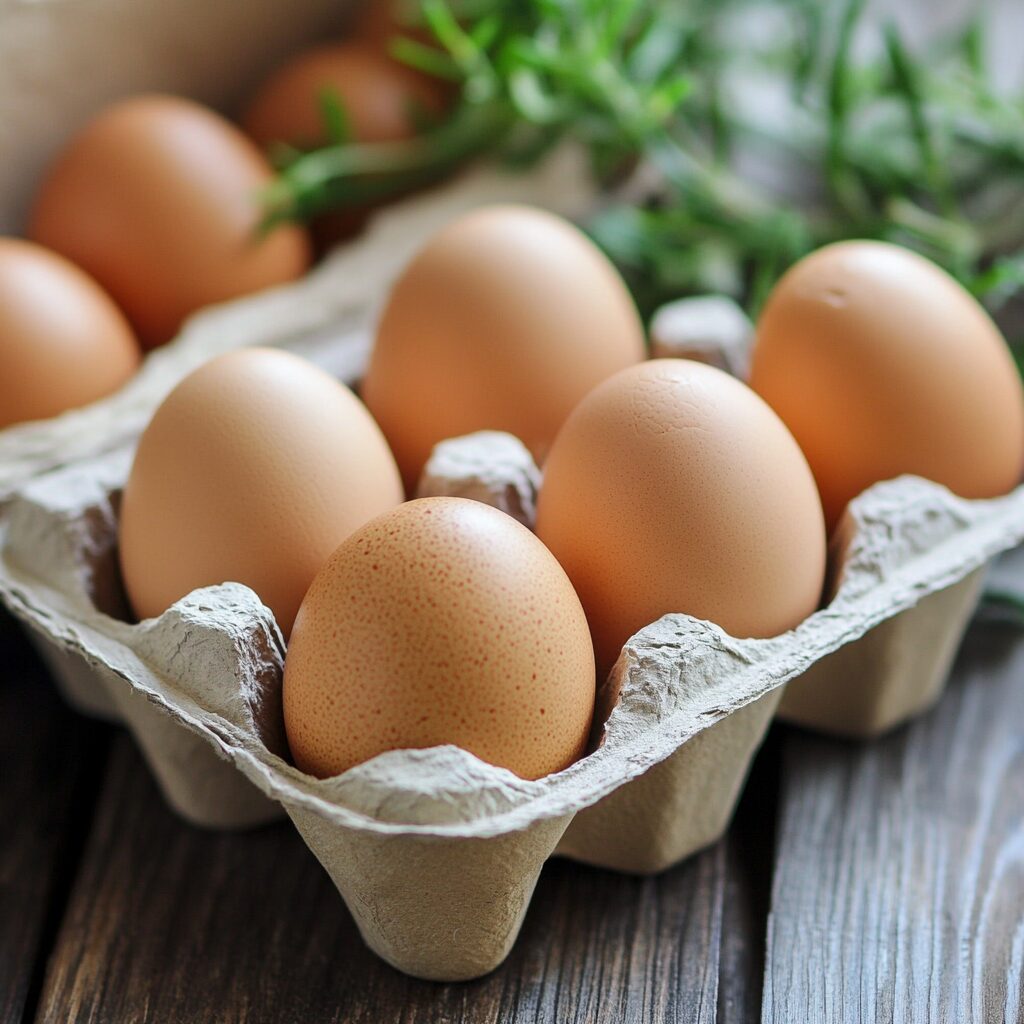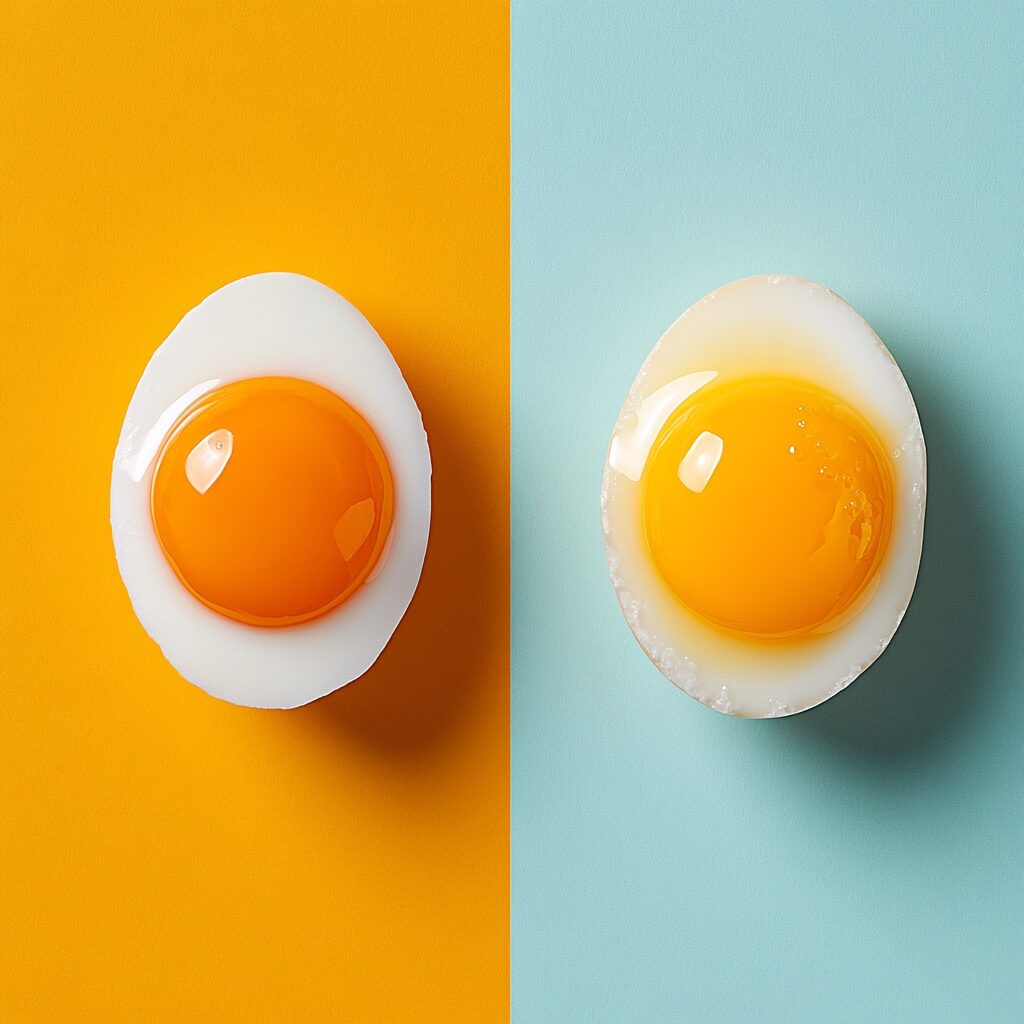Have you ever cracked open an egg and noticed that the yolk looks different from the last time you made breakfast? You’re not imagining things. The color of egg yolks can vary quite a bit, from pale yellow to deep orange. But what’s behind this colorful mystery? It turns out, the secret to egg yolk color is all about what the chicken had for breakfast.
Chickens don’t make their own yolk pigments

Here’s a surprising fact: chickens can’t produce the pigments that color their egg yolks. According to ScienceDirect, hens lack the ability to synthesize carotenoids, the compounds responsible for yolk color. Instead, they rely entirely on their diet to provide these pigments. It’s like a chicken-sized game of “you are what you eat,” but in this case, it’s “your eggs are what you eat.”
This means that the color of an egg yolk is essentially a reflection of the hen’s diet. If a chicken is munching on feed rich in yellow-orange pigments called xanthophylls, you can bet their egg yolks will sport a deeper, more vibrant hue. On the flip side, a diet lacking in these colorful compounds will result in paler yolks.
But don’t worry, this doesn’t mean that pale yolks are nutritionally inferior. The color is just a cosmetic feature, not a health indicator. It’s more like choosing between a yellow or red apple – they might look different, but nutritionally, they’re pretty similar.
Free-range chickens often produce darker yolks

Ever noticed how free-range eggs often have darker, more orange yolks? There’s a good reason for that. Free-range farming allows chickens to roam outdoors, giving them access to a more varied diet. These lucky birds get to feast on all sorts of goodies like insects, grasses, and other plants rich in carotenoids.
This natural buffet is packed with beta-carotene, the same compound that gives carrots their orange color. When chickens consume more beta-carotene, it shows up in their egg yolks, giving them that rich, golden hue that many consumers associate with “farm-fresh” eggs.
But here’s where it gets interesting: the definition of “free-range” can vary widely depending on where you live. In the U.S., the USDA has minimal requirements for free-range labeling, while the EU has more detailed specifications. So, a “free-range” egg in one country might not be quite the same as in another.
Seasonal changes affect yolk color

If you’re an avid egg eater, you might notice that your egg yolks change color with the seasons. It’s not your imagination playing tricks on you – there’s actually a scientific explanation for this phenomenon.
According to Happy Hens, yolk colors tend to be darker in spring and early summer. Why? Well, it’s all about the grass. In spring, grass is plentiful and at its nutritional peak, packed with those carotenoids we talked about earlier. Chickens feasting on this spring bounty produce eggs with yolks ranging from light orange to deep amber.
As summer progresses and the grass dries out, you might notice the yolks becoming a softer yellow. And in winter, when fresh greens are scarce, yolks often reach their palest hue. It’s like a year-round color show in your breakfast pan!
Commercial farms can control yolk color

Now, you might be wondering: if yolk color depends on diet, can’t commercial farms just control what chickens eat to get the perfect yolk color? Bingo! That’s exactly what many large-scale egg producers do.
Crystal Creek Natural explains that commercial farms often use a two-step process to achieve the desired yolk color. First, they ensure the chickens’ diet has enough yellow pigments (xanthophylls) to reach a baseline yellow color. Then, they add red pigments (carotenes) to achieve those rich, golden colors that many consumers prefer.
Some farms even use special color fans (like paint swatches, but for eggs) to measure and standardize yolk color. Talk about egg-acting standards!
Yolk color doesn’t indicate nutritional value
Here’s a common egg myth that needs to be cracked: darker yolks are not necessarily more nutritious. Organic Valley confirms that the nutrition of egg yolks isn’t directly related to their color.
Yolks, regardless of their hue, are nutritional powerhouses. They contain a variety of important nutrients like fat-soluble vitamins, essential fatty acids, and minerals. In fact, yolks contain nearly half the total protein of an egg. So whether your yolk is pale yellow or deep orange, you’re still getting a nutrient-dense package.
What if all eggs suddenly turned blue? As long as the chicken’s diet contained the necessary nutrients, those quirky blue yolks would be just as nutritious as their yellow and orange counterparts. It’s a reminder that when it comes to eggs, you can’t judge a yolk by its color.
Darker yolks don’t necessarily taste better
Another egg myth that’s hard to beat: darker yolks taste better. While many people swear by the superior flavor of deep orange yolks, science hasn’t backed this up. Flavor, like beauty, seems to be in the eye (or in this case, the taste buds) of the beholder.
Organic Valley notes that while many consumers believe darker yolks are more flavorful, this hasn’t been proven by scientific studies. The perceived difference in taste could be due to other factors, such as the freshness of the egg or even the power of suggestion.
So, if you’ve been paying premium prices for those deep orange yolks thinking they’ll make your omelets taste better, you might want to reconsider. Your wallet (and your taste buds) might thank you.
Egg yolk color can vary within the same carton

Have you ever cracked open a few eggs from the same carton and noticed that the yolks aren’t all the same color? Don’t worry, you’re not going crazy, and those eggs aren’t bad. This color variation is actually quite normal, especially in eggs from smaller farms or backyard chickens.
Even in a flock where all the chickens have access to the same food, individual hens may have different dietary preferences. Some might gobble up more insects or greens, while others stick mainly to grain. These individual dietary choices can lead to variations in yolk color, even among eggs laid on the same day by the same flock.
It’s like a chicken potluck – each hen brings something a little different to the table (or in this case, the egg carton).
Egg yolk color doesn’t affect cooking properties
If you’re an avid baker or cook, you might be wondering if the color of your egg yolks will affect your culinary creations. Rest easy, chef! The color of the yolk doesn’t significantly impact the egg’s cooking properties.
Whether you’re whipping up a fluffy meringue or creating a rich hollandaise sauce, the color of your yolks won’t make a difference in how the egg performs in your recipe. The only thing that might change is the visual appearance of your dishes – a frittata made with dark orange yolks might look a bit more vibrant than one made with pale yellow yolks.
So go ahead and use whatever eggs you have on hand. Your soufflé will rise (or fall) based on your technique, not your yolk color!
In the end, the color of your egg yolks is more about aesthetics than anything else. Whether you prefer the deep orange hues of free-range eggs or the consistent pale yellow of commercial varieties, you’re still getting a nutritious and versatile ingredient. So next time you crack open an egg and see a yolk that’s a different shade than you expected, remember: it’s not about the color, it’s about what you do with it. Happy cooking!

